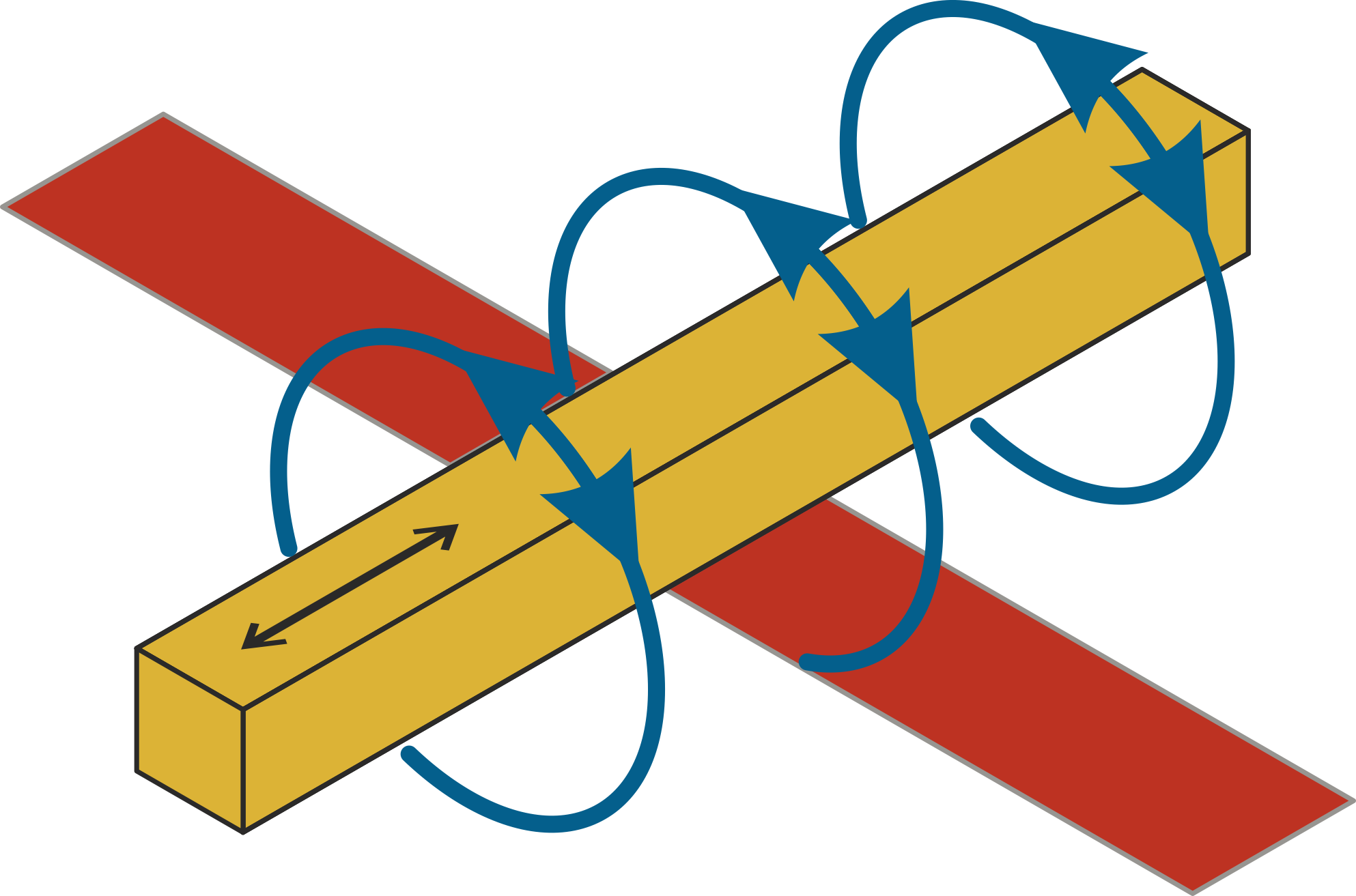Spin waves
Spin waves are collective excitations of the spins of electrons in a magnetic material. These excitations can be thought of as waves of spin fluctuations that propagate through the material. Like all waves, spin waves have a characteristic wavelength, frequency, phase and propagation velocity.
Spin waves can also be described using the concept of a quasiparticle which is called the magnon. In a ferromagnetic material, for example, a magnon can be thought of as a quantized spin wave that propagates through the material. The energy of a magnon is proportional to its frequency, and the momentum to its wavevector.
Spin waves can interact with other excitations and fields, such as with light or acoustic waves. For example, spin waves can be excited and detected using a microwave antenna. Using external magentic fields the dispersion relation (i.e. the relation between frequency and wavevector) of the spin waves can be manipulated, causing a change of the frequency, amplitude, or phase of the wave.

Representation of a spin wave in top and side view. The magnetic moment, shown in gold, precesses around the static external magnetic field shown in red.

Spin waves can be used for data processing. Spin wave-based computing devices use the phase and amplitude of spin waves to perform logic operations. These devices have the potential to be more energy-efficient than conventional electronic devices, and they may also have applications in the field of quantum computing.
In addition, spin waves can also be used in radio frequency (RF) applications, such as in microwave devices and wireless communication systems. Spin waves can be used to create compact, energy-efficient components that can operate at high frequencies.
